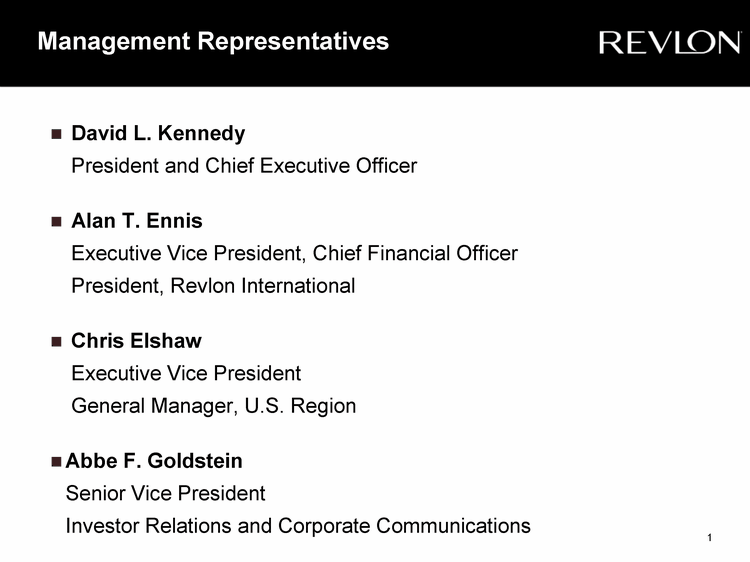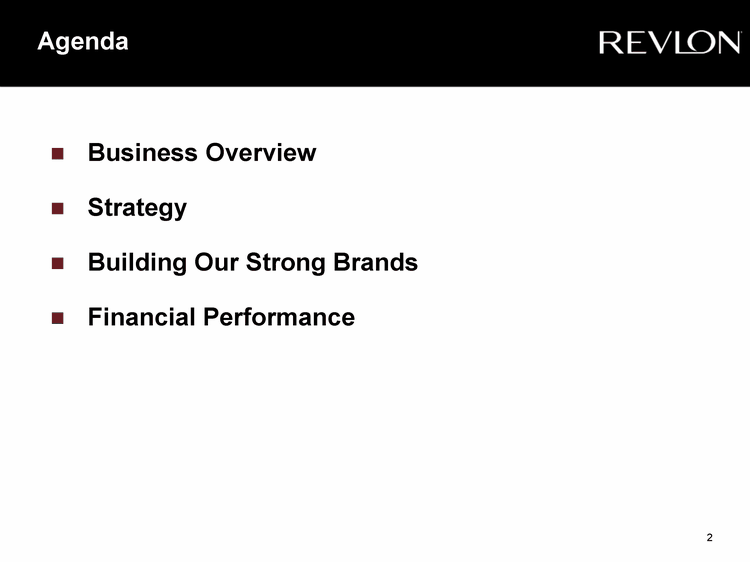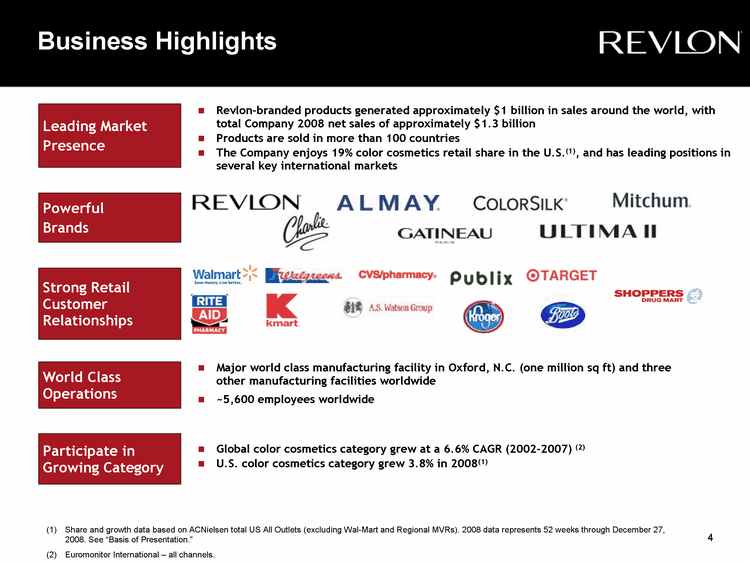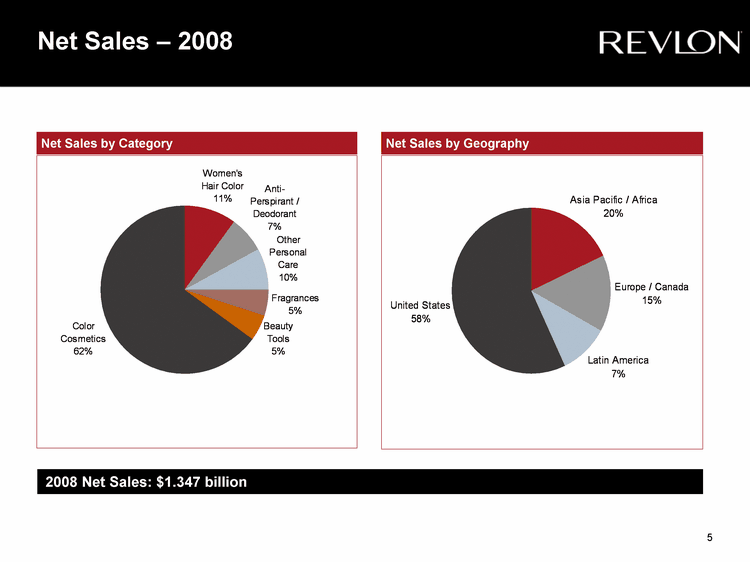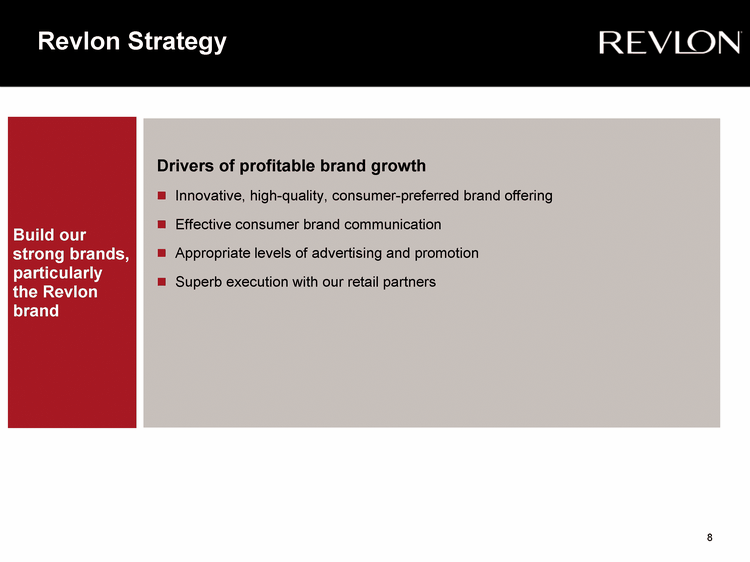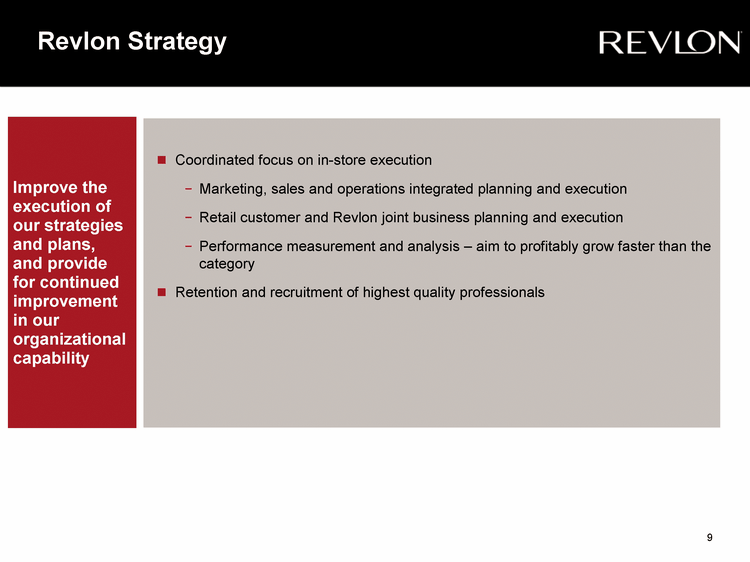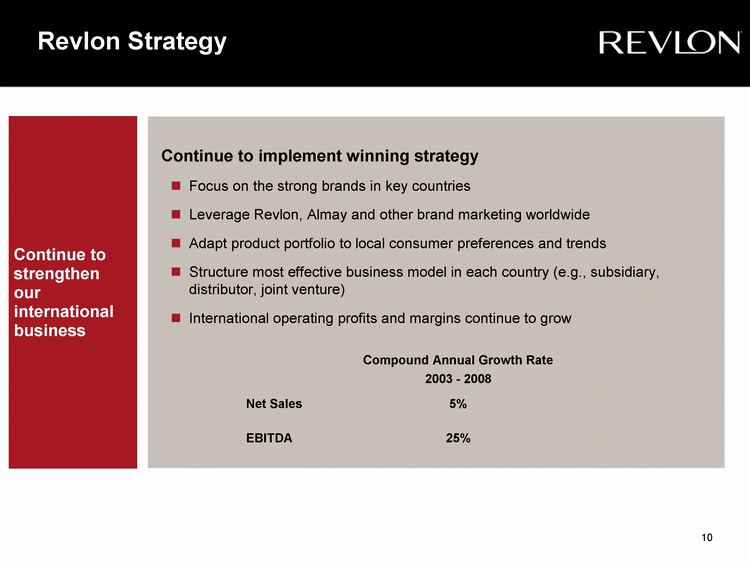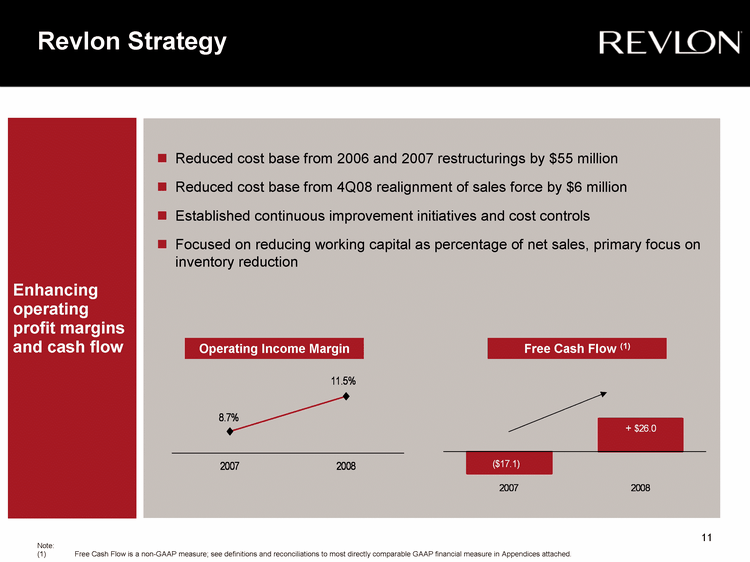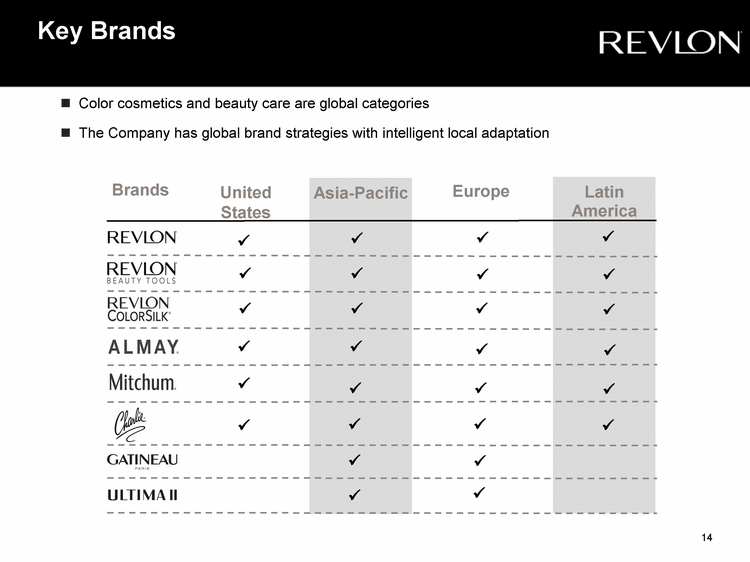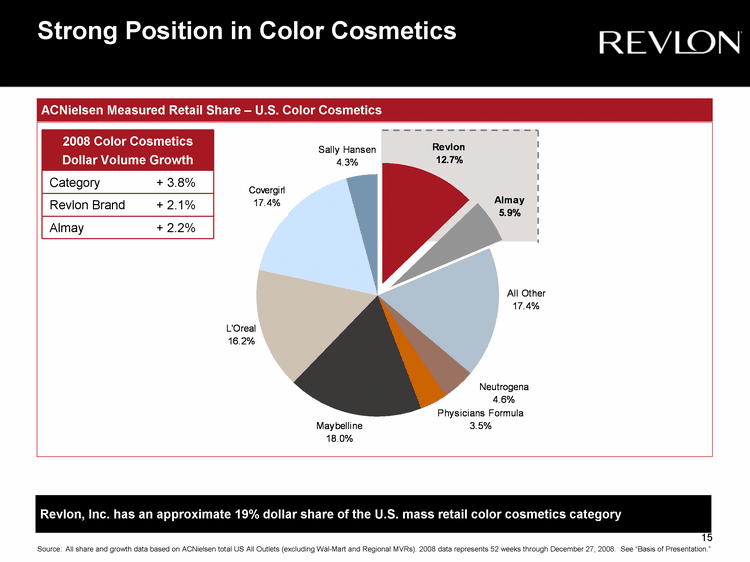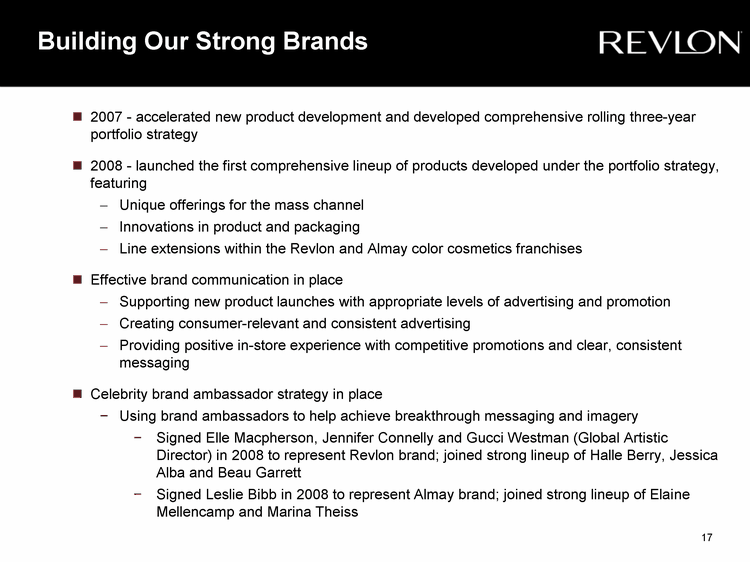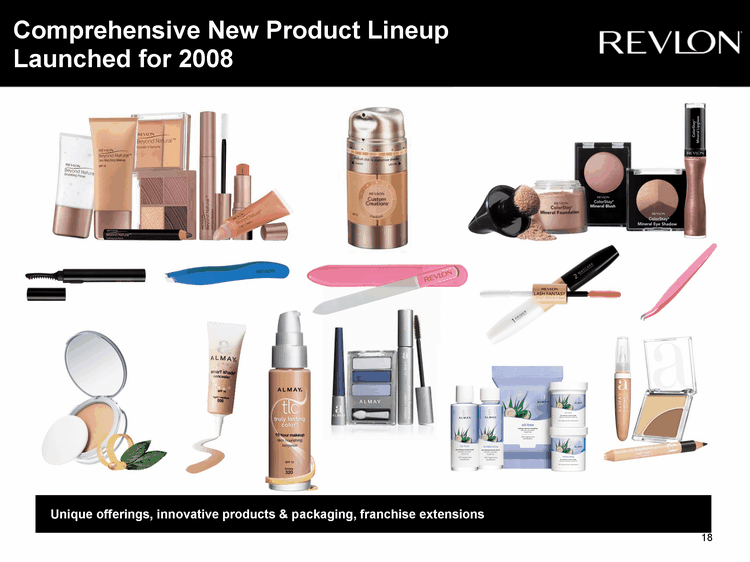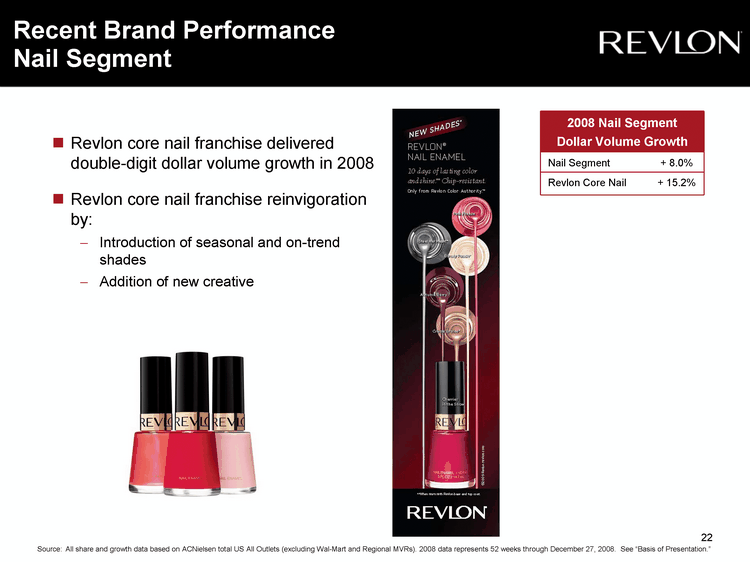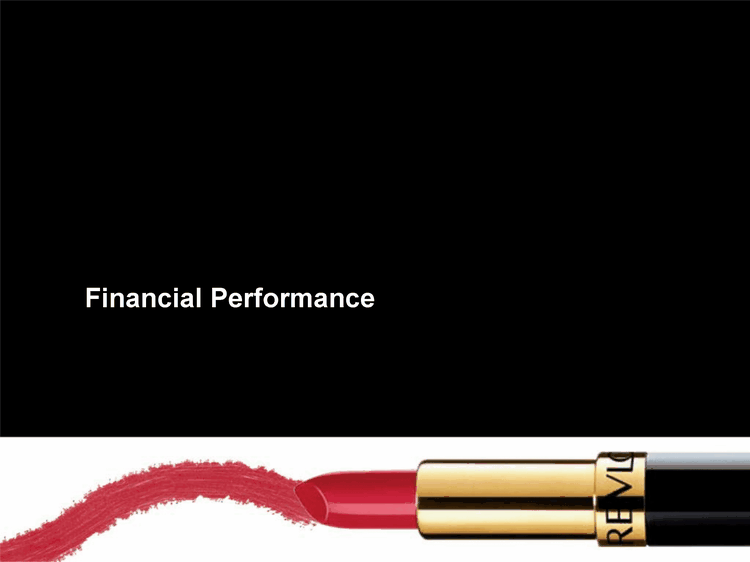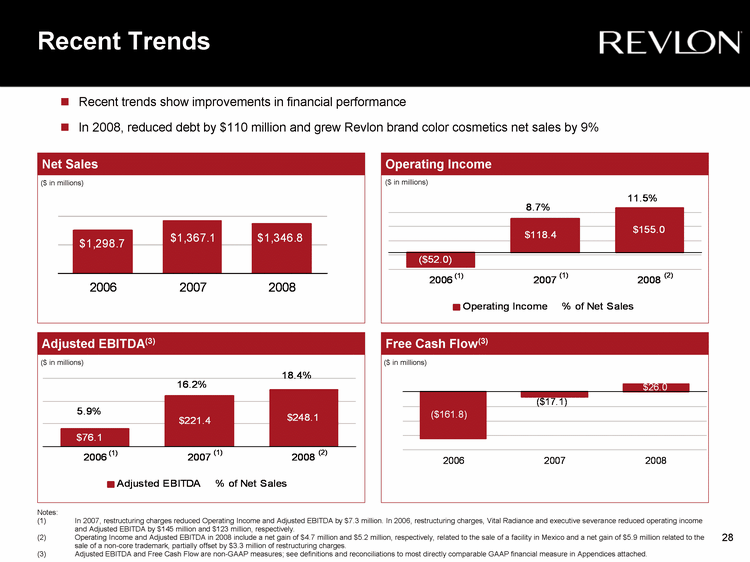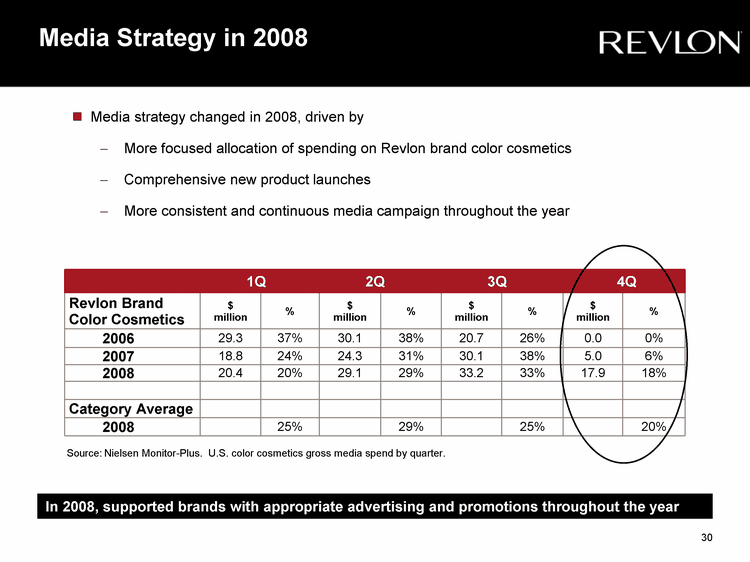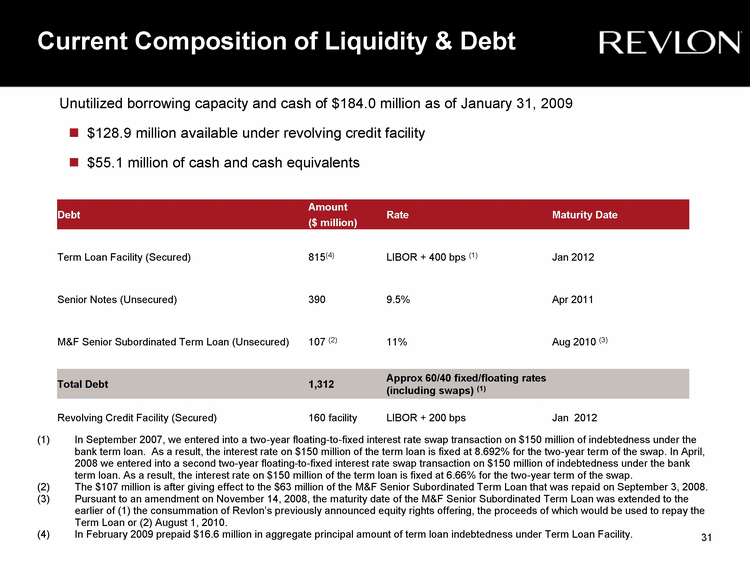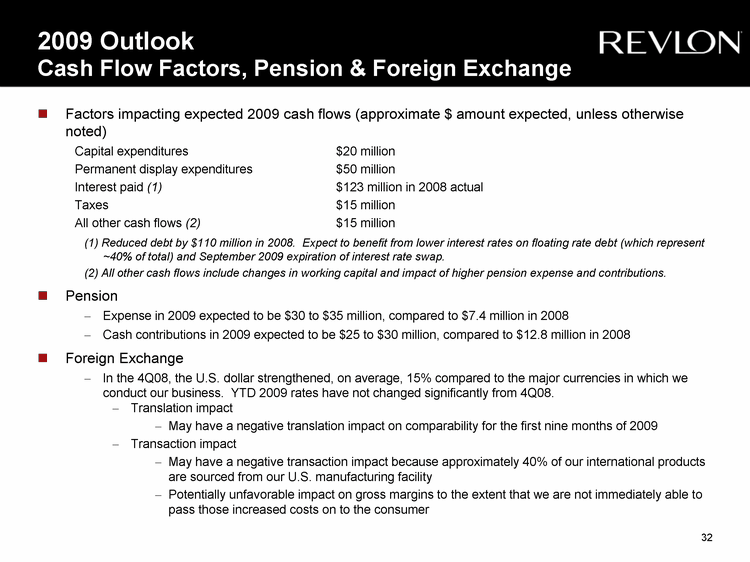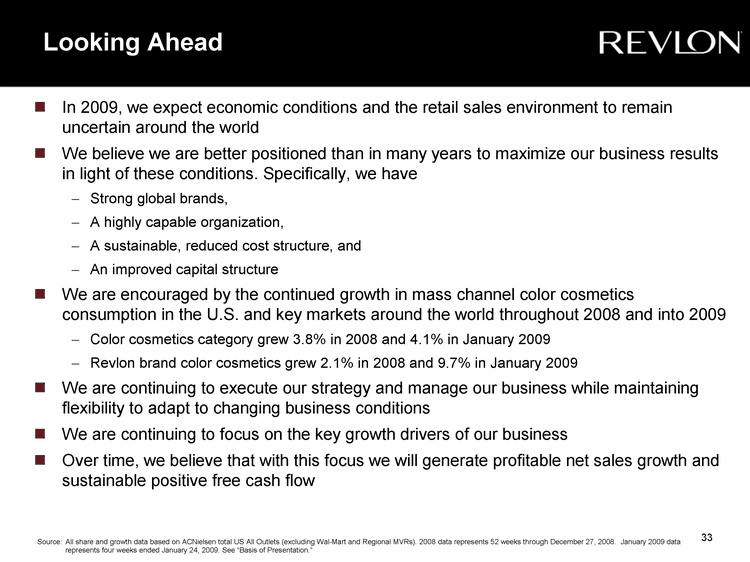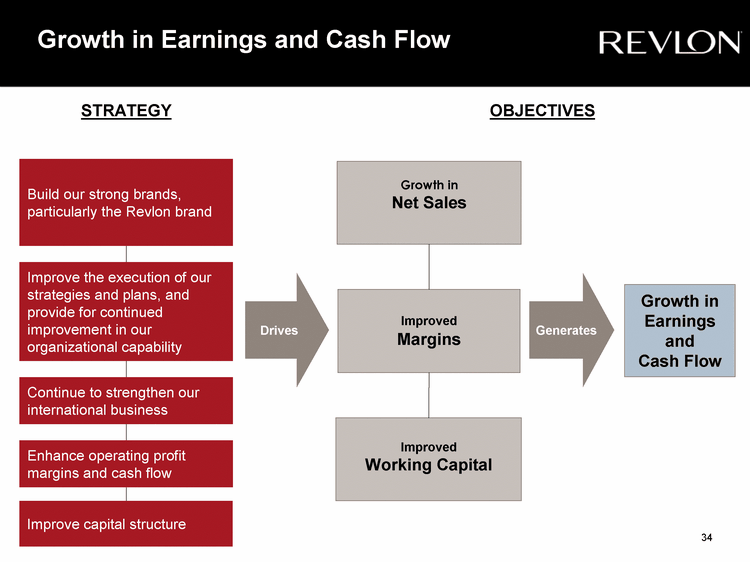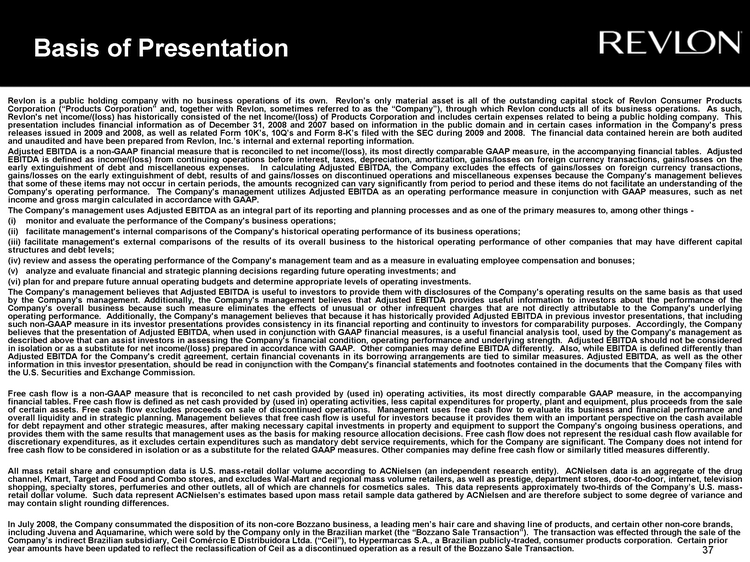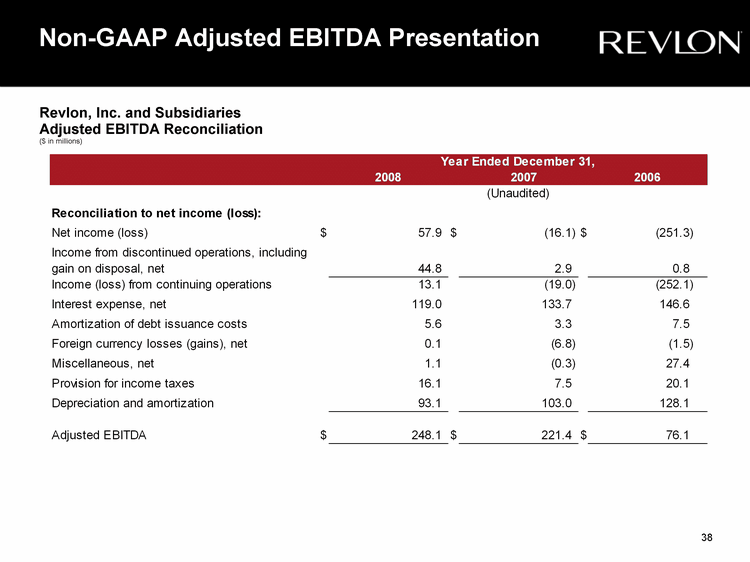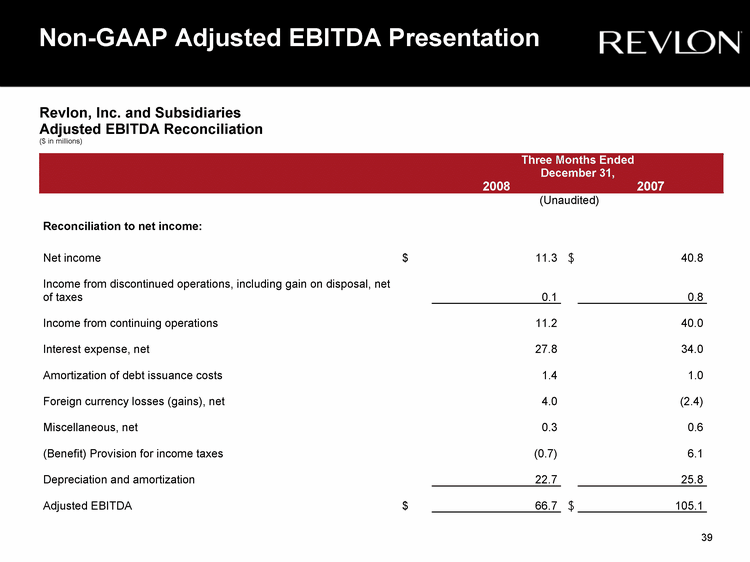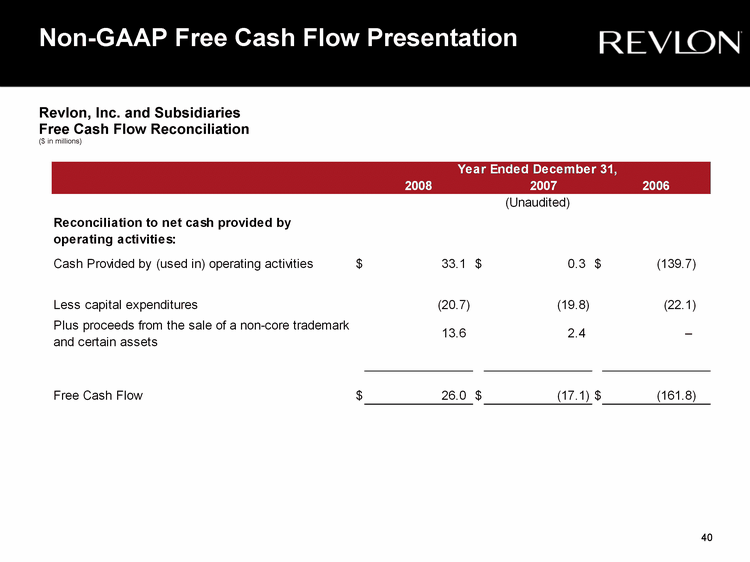| Revlon is a public holding company with no business operations of its own. Revlon's only material asset is all of the outstanding capital stock of Revlon Consumer Products Corporation ("Products Corporation" and, together with Revlon, sometimes referred to as the "Company"), through which Revlon conducts all of its business operations. As such, Revlon's net income/(loss) has historically consisted of the net Income/(loss) of Products Corporation and includes certain expenses related to being a public holding company. This presentation includes financial information as of December 31, 2008 and 2007 based on information in the public domain and in certain cases information in the Company's press releases issued in 2009 and 2008, as well as related Form 10K's, 10Q's and Form 8-K's filed with the SEC during 2009 and 2008. The financial data contained herein are both audited and unaudited and have been prepared from Revlon, Inc.'s internal and external reporting information. Adjusted EBITDA is a non-GAAP financial measure that is reconciled to net income/(loss), its most directly comparable GAAP measure, in the accompanying financial tables. Adjusted EBITDA is defined as income/(loss) from continuing operations before interest, taxes, depreciation, amortization, gains/losses on foreign currency transactions, gains/losses on the early extinguishment of debt and miscellaneous expenses. In calculating Adjusted EBITDA, the Company excludes the effects of gains/losses on foreign currency transactions, gains/losses on the early extinguishment of debt, results of and gains/losses on discontinued operations and miscellaneous expenses because the Company's management believes that some of these items may not occur in certain periods, the amounts recognized can vary significantly from period to period and these items do not facilitate an understanding of the Company's operating performance. The Company's management utilizes Adjusted EBITDA as an operating performance measure in conjunction with GAAP measures, such as net income and gross margin calculated in accordance with GAAP. The Company's management uses Adjusted EBITDA as an integral part of its reporting and planning processes and as one of the primary measures to, among other things - (i) monitor and evaluate the performance of the Company's business operations; (ii) facilitate management's internal comparisons of the Company's historical operating performance of its business operations; (iii) facilitate management's external comparisons of the results of its overall business to the historical operating performance of other companies that may have different capital structures and debt levels; (iv) review and assess the operating performance of the Company's management team and as a measure in evaluating employee compensation and bonuses; (v) analyze and evaluate financial and strategic planning decisions regarding future operating investments; and (vi) plan for and prepare future annual operating budgets and determine appropriate levels of operating investments. The Company's management believes that Adjusted EBITDA is useful to investors to provide them with disclosures of the Company's operating results on the same basis as that used by the Company's management. Additionally, the Company's management believes that Adjusted EBITDA provides useful information to investors about the performance of the Company's overall business because such measure eliminates the effects of unusual or other infrequent charges that are not directly attributable to the Company's underlying operating performance. Additionally, the Company's management believes that because it has historically provided Adjusted EBITDA in previous investor presentations, that including such non-GAAP measure in its investor presentations provides consistency in its financial reporting and continuity to investors for comparability purposes. Accordingly, the Company believes that the presentation of Adjusted EBITDA, when used in conjunction with GAAP financial measures, is a useful financial analysis tool, used by the Company's management as described above that can assist investors in assessing the Company's financial condition, operating performance and underlying strength. Adjusted EBITDA should not be considered in isolation or as a substitute for net income/(loss) prepared in accordance with GAAP. Other companies may define EBITDA differently. Also, while EBITDA is defined differently than Adjusted EBITDA for the Company's credit agreement, certain financial covenants in its borrowing arrangements are tied to similar measures. Adjusted EBITDA, as well as the other information in this investor presentaation, should be read in conjunction with the Company's financial statements and footnotes contained in the documents that the Company files with the U.S. Securities and Exchange Commission. Free cash flow is a non-GAAP measure that is reconciled to net cash provided by (used in) operating activities, its most directly comparable GAAP measure, in the accompanying financial tables. Free cash flow is defined as net cash provided by (used in) operating activities, less capital expenditures for property, plant and equipment, plus proceeds from the sale of certain assets. Free cash flow excludes proceeds on sale of discontinued operations. Management uses free cash flow to evaluate its business and financial performance and overall liquidity and in strategic planning. Management believes that free cash flow is useful for investors because it provides them with an important perspective on the cash available for debt repayment and other strategic measures, after making necessary capital investments in property and equipment to support the Company's ongoing business operations, and provides them with the same results that management uses as the basis for making resource allocation decisions. Free cash flow does not represent the residual cash flow available for discretionary expenditures, as it excludes certain expenditures such as mandatory debt service requirements, which for the Company are significant. The Company does not intend for free cash flow to be considered in isolation or as a substitute for the related GAAP measures. Other companies may define free cash flow or similarly titled measures differently. All mass retail share and consumption data is U.S. mass-retail dollar volume according to ACNielsen (an independent research entity). ACNielsen data is an aggregate of the drug channel, Kmart, Target and Food and Combo stores, and excludes Wal-Mart and regional mass volume retailers, as well as prestige, department stores, door-to-door, internet, television shopping, specialty stores, perfumeries and other outlets, all of which are channels for cosmetics sales. This data represents approximately two-thirds of the Company's U.S. mass- retail dollar volume. Such data represent ACNielsen's estimates based upon mass retail sample data gathered by ACNielsen and are therefore subject to some degree of variance and may contain slight rounding differences. In July 2008, the Company consummated the disposition of its non-core Bozzano business, a leading men's hair care and shaving line of products, and certain other non-core brands, including Juvena and Aquamarine, which were sold by the Company only in the Brazilian market (the "Bozzano Sale Transaction"). The transaction was effected through the sale of the Company's indirect Brazilian subsidiary, Ceil Comercio E Distribuidora Ltda. ("Ceil"), to Hypermarcas S.A., a Brazilian publicly-traded, consumer products corporation. Certain prior year amounts have been updated to reflect the reclassification of Ceil as a discontinued operation as a result of the Bozzano Sale Transaction. 37 Basis of Presentation |

